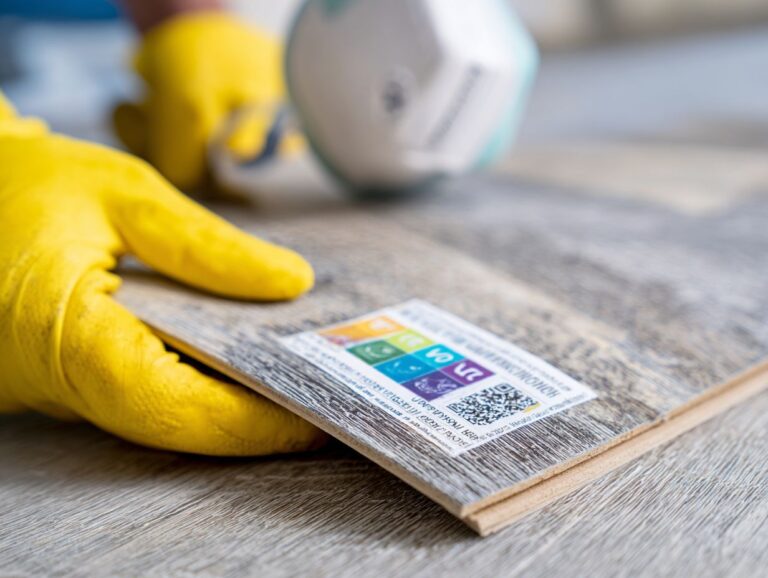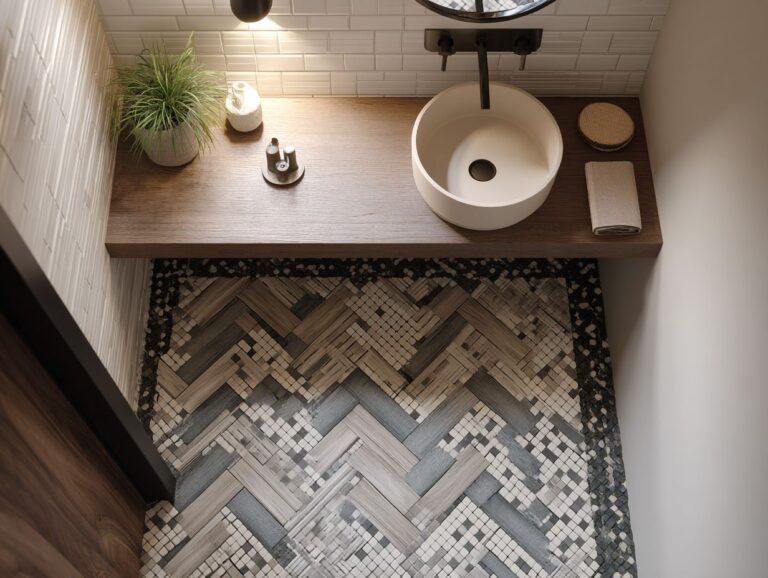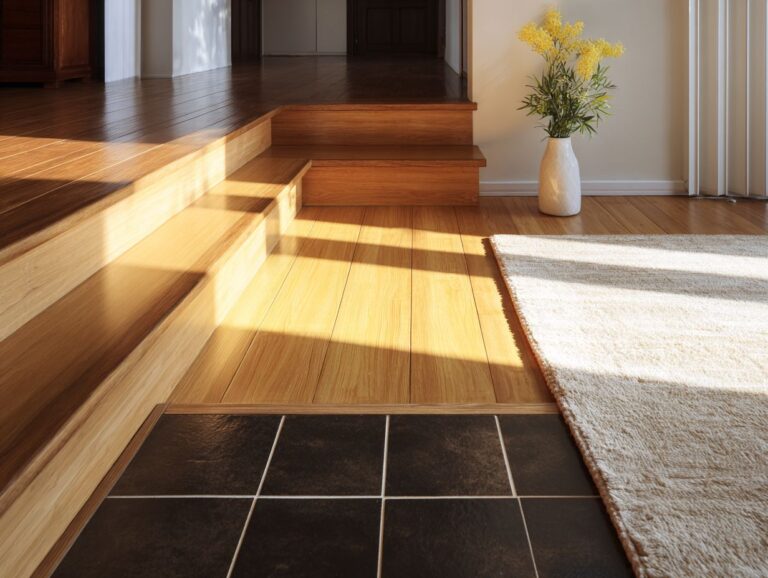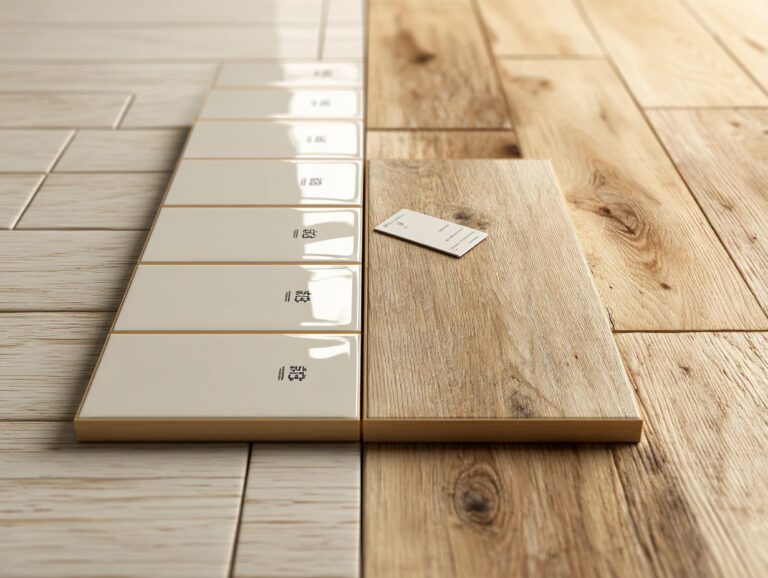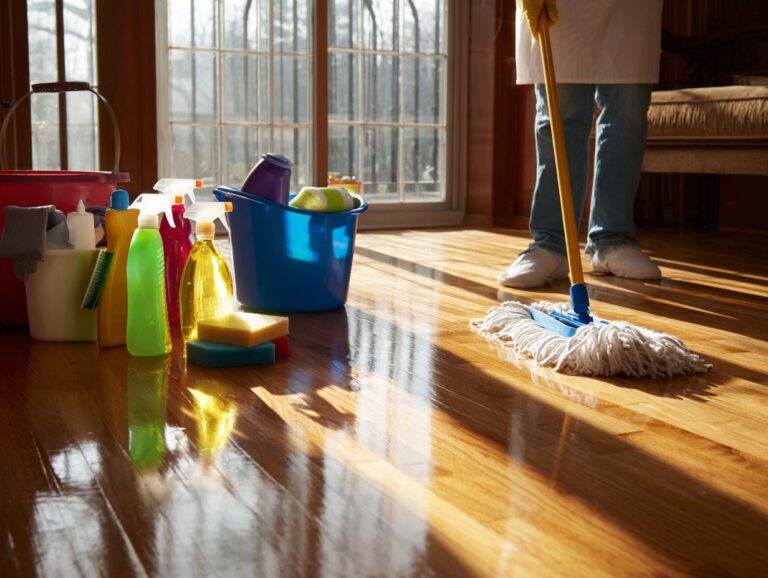Vinyl Flooring Pattern Options – Wood Look, Stone Look & More
Contents
- Introduction to Vinyl Flooring Patterns
- Wood Look Vinyl Flooring
- Stone Look Vinyl Flooring
- Other Vinyl Flooring Patterns
- Installation Options
- Maintenance and Care
- Vinyl Flooring Market Trends
- Frequently Asked Questions
- What are the different vinyl flooring pattern options available?
- What is the advantage of choosing a wood look vinyl flooring pattern?
- Can I achieve a realistic stone look with vinyl flooring?
- Are there customizable vinyl flooring pattern options available?
- Is vinyl flooring with a wood or stone look hard to maintain?
- Can vinyl flooring with different patterns be installed in the same space?
Introduction to Vinyl Flooring Patterns
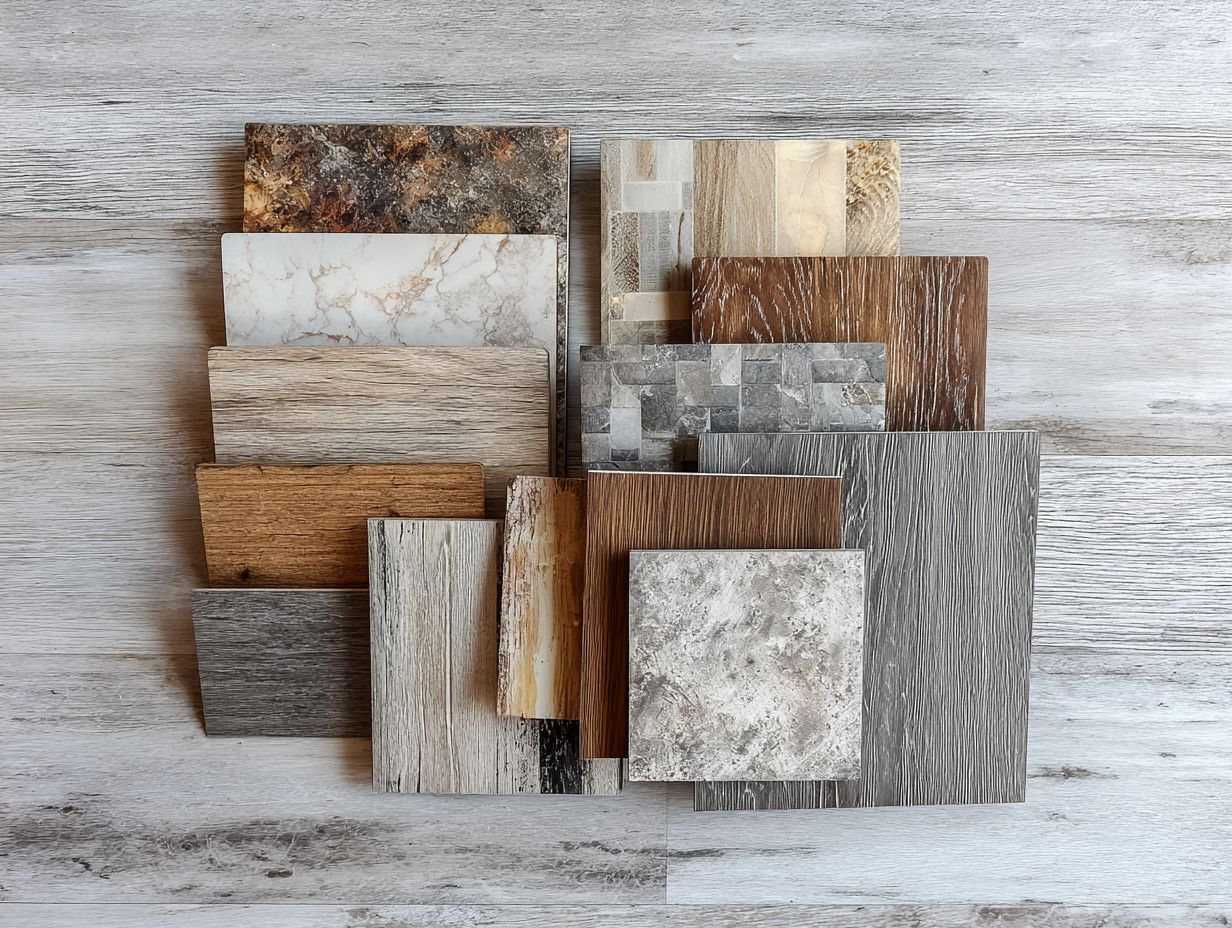
Key Takeaways:
What is Vinyl Flooring?
Vinyl flooring is a synthetic flooring option that mimics natural materials like wood and stone, offering waterproof and cost-effective solutions for any space.
It usually has a core made of PVC (polyvinyl chloride) for strength, a design layer with detailed printing to mimic natural materials, and a protective top layer that helps prevent scratches and stains.
There are two main types:
- luxury vinyl tiles (LVT), which come in various shapes,
- luxury vinyl planks (LVP), ideal for simulating traditional hardwood. Worth exploring: Luxury Vinyl Plank (LVP) vs Luxury Vinyl Tile (LVT) Guide
Many products now use click technology for easy installation, letting homeowners create a polished appearance without using glue or nails.
Benefits of Vinyl Flooring
Vinyl flooring has many benefits, such as being very durable, easy to care for, and comfortable to walk on.
One of the standout features of vinyl flooring is its lifespan, which can reach up to 20 years with proper care. Maintenance is minimal-typically just a weekly cleaning with a damp mop keeps it looking fresh.
Its water resistance makes it an ideal choice for bathrooms and kitchens. Vinyl offers a cushioned feel underfoot, providing extra comfort compared to harder surfaces like tile or hardwood.
If you are thinking about installation, choose brands like Karndean or Amtico for top-quality choices that improve your home. If interested, you might find our guide on rigid core vinyl flooring helpful for understanding more about its benefits and installation.
Wood Look Vinyl Flooring
Vinyl flooring with a wood look offers the style of real wood and is easy to maintain, which is why many homeowners prefer it.
Types of Wood Look Patterns
Wood look vinyl is available in a variety of patterns, including traditional oak grains, rustic hickories, and contemporary finishes.
Notable collections, like COREtec Originals, showcase a diverse selection to match any interior style. The traditional oak grain offers warmth and timeless elegance, perfect for classic spaces.
In contrast, rustic hickories introduce a more textured, farmhouse aesthetic, ideal for cozy, inviting rooms. For a sleek, modern look, consider vinyl planks with contemporary finishes, which deliver a sophisticated vibe while ensuring durability. To make an informed choice on the durability aspect, you can explore our Vinyl Flooring Wear Layer – Thickness and Durability Guide.
Each pattern improves the look and fits different design goals, helping you create the atmosphere you want.
Color Variations in Wood Look Vinyl
Wood look vinyl flooring comes in many colors, from dark mahogany to light oak, offering different design choices.
Using colors like Champagne Limestone can lighten rooms and create a sense of openness, perfect for compact areas.
On the other hand, Brushed Silver adds a modern touch, perfectly complementing contemporary designs in living areas or kitchens.
For cozy settings, opting for a deep walnut shade can create warmth and intimacy.
When selecting a color, consider the room’s lighting and function; warm tones work well in dim areas, while lighter shades are better for naturally lit spaces.
Choosing a floor color that goes well with your current decor improves the look of the space.
Texture and Finish Options
Different textures and finishes for wood-look vinyl make the flooring look more realistic and visually appealing.
Different textures, such as hand-scraped and wire-brushed finishes, mimic real wood grains, creating an authentic look.
For example, hand-scraped finishes provide a rustic charm, often favored in farmhouse designs, while wire-brushed surfaces offer a more contemporary aesthetic with subtle, linear patterns.
The type of finish you choose greatly affects the feel of the room: a matte finish gives a warm and cozy atmosphere, while a gloss finish bounces light around, making the area feel bigger and lively.
Experimenting with these textures and finishes allows homeowners to align their flooring choices with their desired interior style.
Stone Look Vinyl Flooring
Vinyl flooring with a stone appearance mimics the look of real stone, offering better strength and easy upkeep.
Popular Stone Patterns
Popular stone patterns in vinyl flooring include designs that imitate granite, marble, and slate, offering a luxurious look at a fraction of the cost.
Nero Marquina, with its noticeable black and white patterns, is ideal for contemporary kitchens. It offers a strong visual appeal without the maintenance of natural stone.
Conversely, Torino Grigio’s soft gray tones work well in entryways, offering a subtle elegance that complements a variety of decor styles.
For areas with a lot of foot traffic, use a slate design with texture, which increases grip and reduces slipping.
To select the most suitable pattern, evaluate the room’s lighting and color scheme to create a balanced look in your home. Curious about how different types of vinyl flooring can enhance your space? Our comprehensive comparison of sheet vinyl, vinyl plank, and vinyl tile offers valuable insights.
Color and Texture Choices
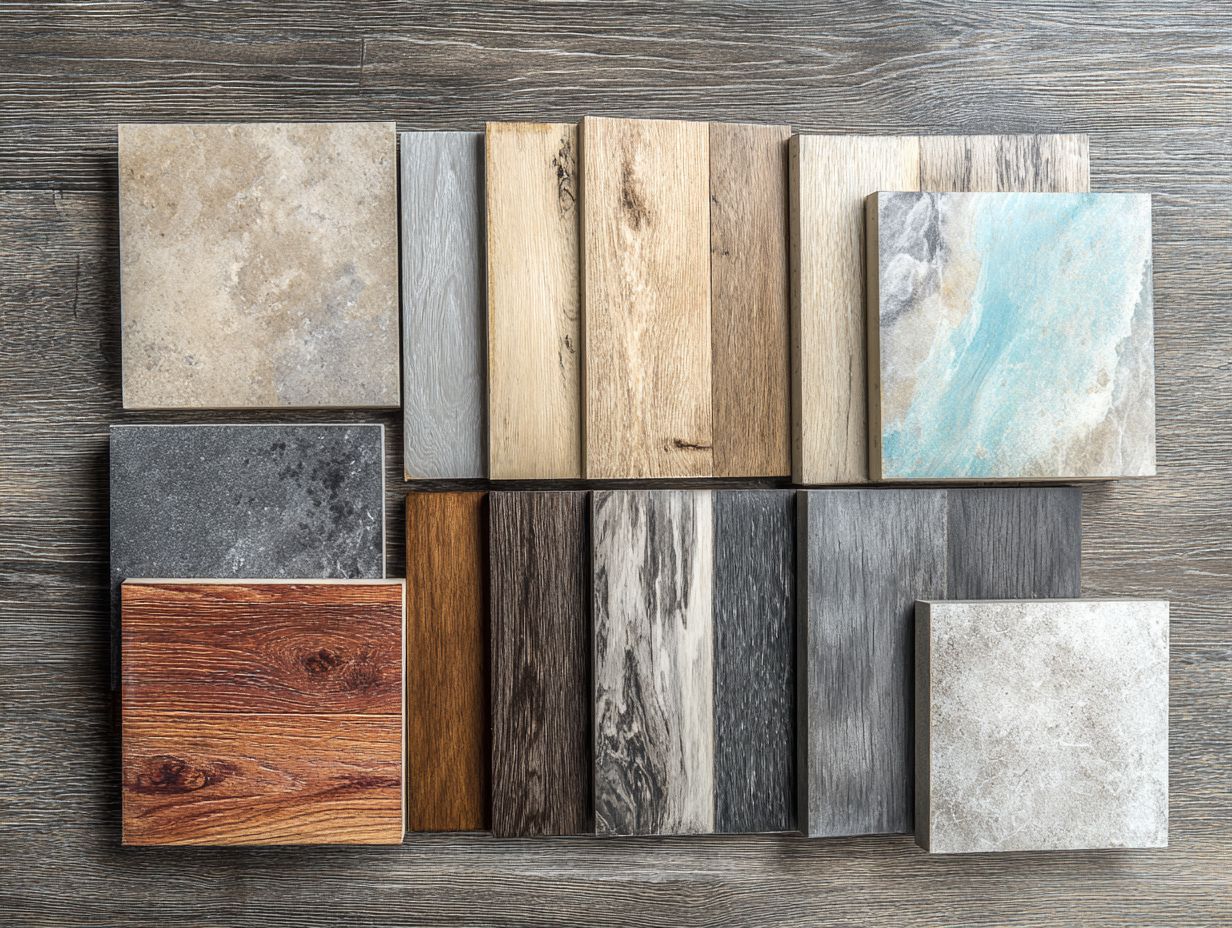
Stone look vinyl comes in various colors and textures, enabling homeowners to design spaces that match their personal style.
To select the perfect palette, begin by evaluating your existing decor: warm tones pair well with colors like Bianco Matte, while cooler finishes like Avorio Beige suit modern settings.
When mixing finishes, consider using a matte for larger areas and incorporating a glossy texture on accent pieces to create depth. Sample boards can help visualize combinations, ensuring your selections harmonize with furniture and wall colors.
Aim for a balance, incorporating one dominant color and one or two complementary shades for a cohesive look.
Durability of Stone Look Vinyl
Vinyl flooring with a stone appearance is built to withstand heavy use, making it a durable choice for both residential and commercial areas.
Its durability metrics include a wear layer thickness ranging from 12 to 20 mils, ideal for high-traffic areas.
This flooring is resistant to scratches and stains, ensuring it maintains its appearance in busy environments.
Some brands, like Luxury Vinyl Plank (LVP) from Mohawk or Armstrong, offer warranties of 15 to 30 years, providing added confidence in their longevity.
To install, use a strong glue. This will make the floor stronger and longer-lasting for regular use.
Other Vinyl Flooring Patterns
Apart from wood and stone styles, vinyl flooring includes many choices such as custom designs, abstract patterns, and geometric shapes.
Tile Look Vinyl Flooring
Tile look vinyl flooring mimics the appearance of ceramic or porcelain tiles, providing a chic look with the benefits of vinyl’s ease of maintenance.
This flooring choice works well in different areas.
For bathrooms, choose a water-resistant variant that can withstand moisture; brands like LifeProof offer great durability.
In kitchens, choose products with extra slip resistance to make them safer.
Installation is easy, with peel-and-stick options that are great for do-it-yourself projects.
Vinyl’s flexibility allows it to fit various floor designs, whether you like a herringbone pattern or the usual straight-lay style.
This combination of style and practicality makes tile look vinyl a popular choice for contemporary homes.
Abstract and Geometric Patterns
Vinyl flooring with abstract and geometric designs offers striking style options that can turn areas into artful displays.
These designs, such as chevrons, stripes, and irregular shapes, can add depth and movement to a room. For example, a chevron pattern in black and white can create a striking focal point in a hallway, while soft pastel geometric tiles can bring warmth to a kitchen.
To match such striking flooring, combine it with plain furniture and simple decorations. This approach allows the flooring to stand out without overwhelming the senses, creating a harmonious and inviting atmosphere overall.
Customizable Vinyl Patterns
Custom vinyl flooring patterns allow homeowners to make designs that show their own styles and likes.
Using tools like Khrs Floor Planner, homeowners can easily visualize their flooring choices.
Start by selecting the room type, whether it’s a living room or kitchen, and upload a photo or choose from templates. With a user-friendly interface, you can drag and drop different vinyl patterns onto the floor layout, exploring combinations of colors and textures.
For instance, consider a contemporary living room with a sleek dark oak pattern contrasting against light walls, or a cheerful patterned vinyl in a child’s playroom. This customization enhances the appearance and aids in making informed decisions before installation.
Installation Options
Knowing the installation methods for vinyl flooring is important for getting good results, whether choosing glue down or floating techniques.
Glue Down vs. Floating Vinyl Flooring
Glue down vinyl flooring provides a secure installation method, while floating vinyl allows for easier adjustments and replacements.
When choosing between glue down and floating installations, consider factors like cost, installation time, and room type.
Installing with glue usually costs between $2 and $3 per square foot. It needs a professional and takes about 3 to 5 hours for a room of average size. It’s ideal for high-traffic areas like kitchens and bathrooms due to its durability.
Conversely, floating vinyl is cheaper at about $1.50 to $2.50 per square foot and is often a DIY-friendly option, appealing for living rooms or basements where moisture is a concern.
Professional vs. DIY Installation
Deciding between professional installation and DIY for vinyl flooring impacts both costs and quality, requiring a thorough evaluation of skills and budget.
Hiring professionals usually costs between $1.50 to $3.00 per square foot, guaranteeing quality installation and skill.
If you’re inclined to tackle the project yourself, it’s essential to prepare thoroughly. A DIY checklist should include:
- Measuring the area accurately
- Selecting quality tools (like a vinyl cutter, spacers, and a roller)
- Familiarizing yourself with the installation instructions
Though this path costs less, it requires time and work; think about your comfort level compared to the possible savings before deciding.
Maintenance and Care
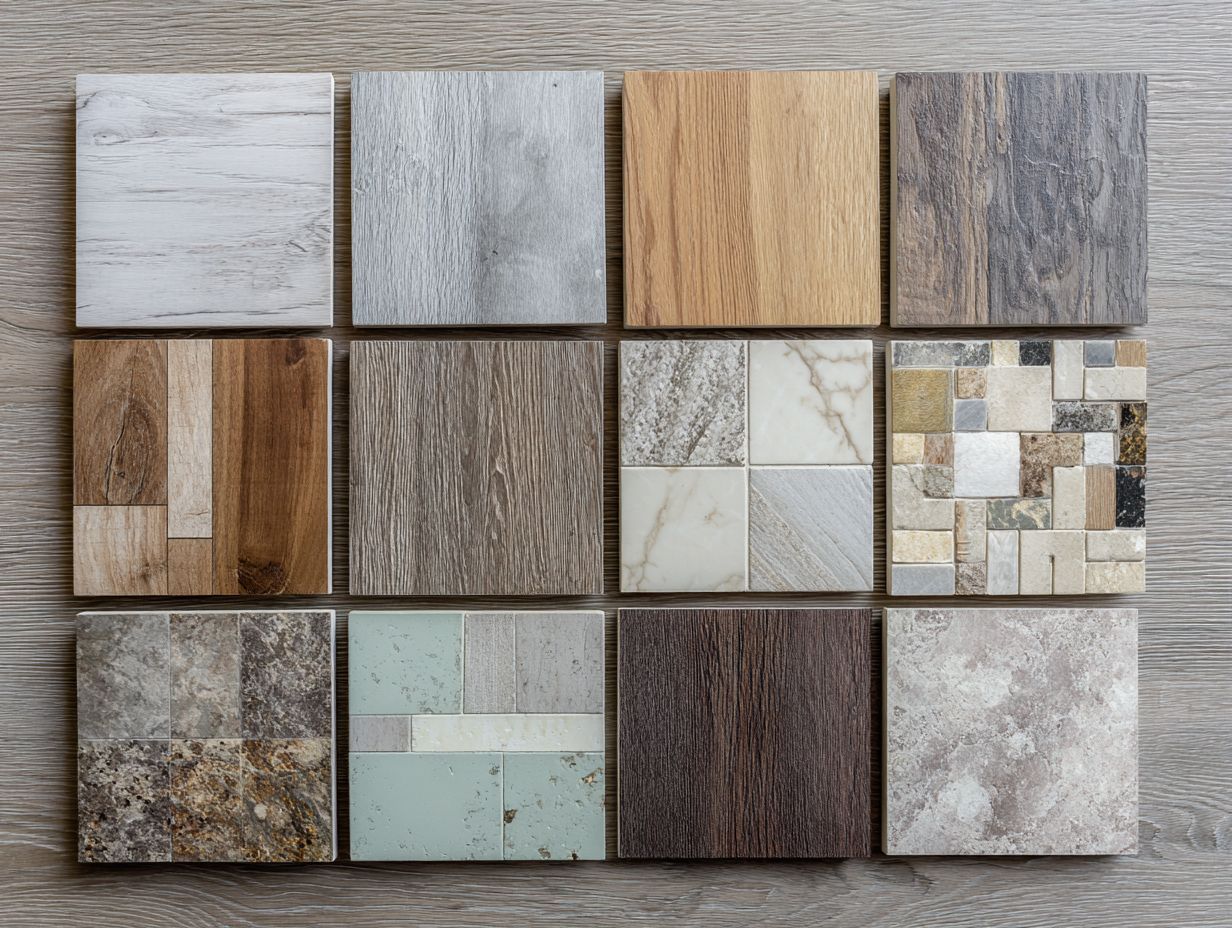
Regular maintenance and cleaning of vinyl flooring make it more durable and maintain its appearance.
Cleaning Tips for Vinyl Flooring
Keeping vinyl flooring clean is simple if you use the right techniques. Regular cleaning keeps your floors looking their best.
To extend its lifespan, clean it every 2-4 weeks with a pH-neutral product such as Bona or Method.
Start with a thorough vacuuming to remove dirt and debris, followed by damp mopping with a microfiber mop to avoid excess water.
For tough stains, create a mixture of vinegar and water, applying it gently with a soft cloth for effective spot cleaning.
By following this routine, you will keep your vinyl looking good and make it last longer.
Long-term Care Strategies
Implementing long-term care strategies protects your investment in vinyl flooring and maintains its performance over time.
To keep your vinyl flooring in good condition for a long time, follow these practical tips:
- Avoid harsh chemicals like bleach that can degrade the surface;
- Use area rugs in high-traffic zones to minimize wear;
- Put a new sealant on the floor every few years to protect it from water damage.
Regularly sweeping and cleaning with a damp cloth can prevent dirt buildup. These active steps keep the floor looking good and make it last longer, saving you money on fixes or buying new flooring.
Choosing the Right Pattern for Your Space
Selecting the right vinyl flooring pattern for your space involves assessing your design goals, traffic levels, and personal style.
Begin by evaluating the function of the room. For high-traffic areas like hallways, opt for textured patterns that conceal scuffs, while sleek, solid colors may suit low-traffic spaces.
Next, consider your existing decor; patterns should complement your color scheme. For example, a geometric pattern can improve modern spaces, while wood-look vinyl fits nicely in traditional homes.
Assess maintenance needs: smoother patterns generally require less upkeep.
Tools like Roomvo can help visualize how different patterns will look in your space.
Future Trends in Vinyl Flooring Design
Trends in vinyl flooring design are moving towards using eco-friendly materials and offering more customization choices.
Manufacturers are increasingly investing in sustainable materials such as recycled vinyl and bio-based plastics, which reduce environmental impact.
For instance, brands like Shaw Floors and Karndean are leading the way with products that prioritize eco-friendliness.
Advanced printing technology allows for hyper-realistic designs, creating a more authentic wood or stone aesthetic. Customization options are also expanding, enabling homeowners to select textures, colors, and styles that genuinely reflect their personal tastes.
As a result, vinyl flooring is becoming a product that combines style and eco-friendliness.
Vinyl Flooring Market Trends
Vinyl Flooring Market Trends
Market Growth and Projections: Market Size Projection
Market Growth and Projections: Growth Rates
Market Challenges: Raw Material Impact
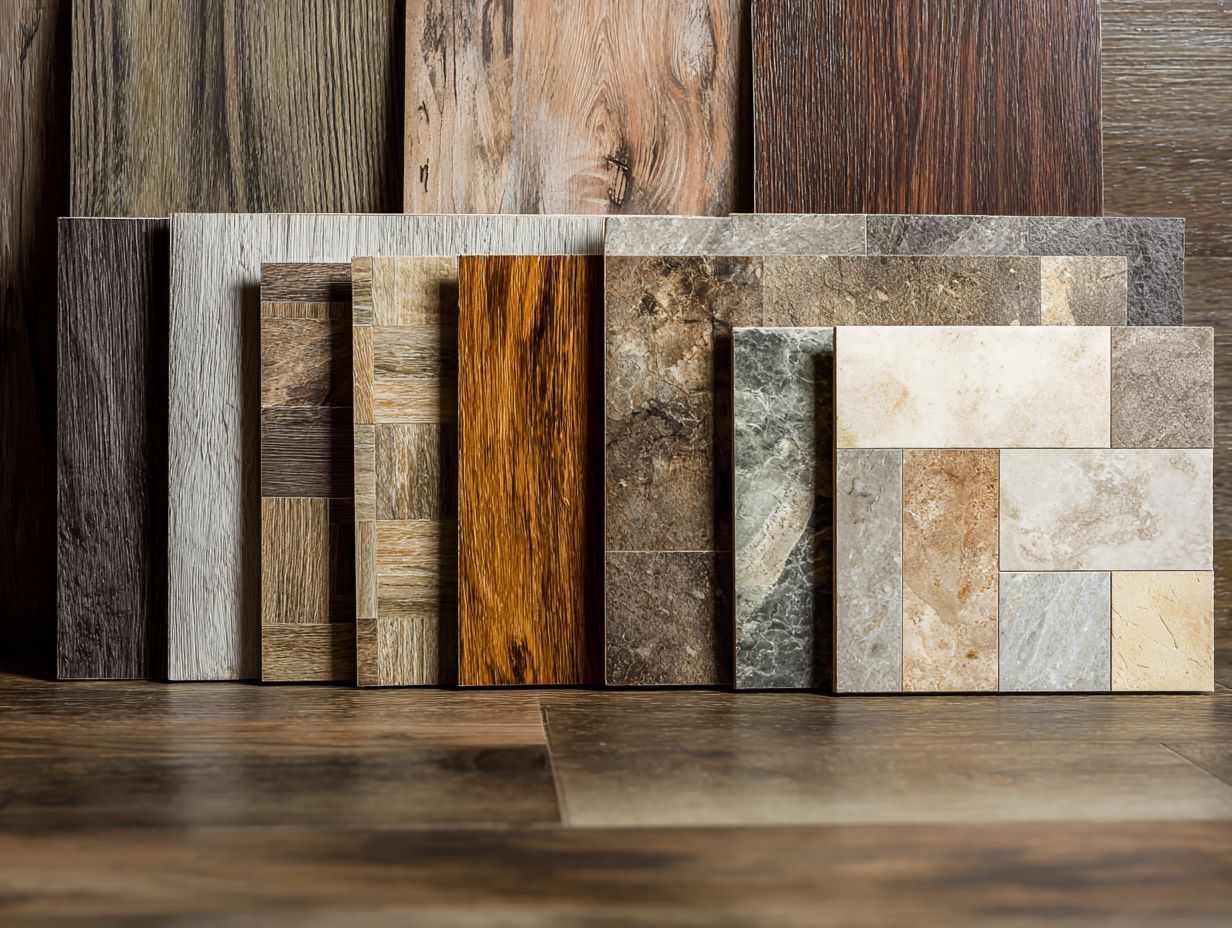
The Vinyl Flooring Market Trends The data provides a full overview of present market trends, projected growth, regional information, and key challenges affecting the industry. Vinyl flooring plays a key role in building and home improvement. Its market growth depends on various elements like the economy, what consumers want, and supply chain challenges.
Market Growth and Projections indicate a robust expansion, with the market size increasing from $36.63 billion in 2023 to $39.19 billion in 2024. This growth continues, projected to reach $66.94 billion by 2032. The market’s compound annual growth rate (CAGR) is estimated at 6.8% between 2024 and 2032, slightly higher than the 6.3% CAGR projected for 2024 to 2031. These figures underline the market’s resilience and potential, driven by rising demand for durable, aesthetically pleasing flooring solutions.
Regional Market Shares highlight the Asia Pacific region as a key player, holding a 33.93% market share in 2023. With a market size of $12.43 billion that year, Asia Pacific’s dominance reflects its booming construction industry and urbanization trends. The region’s growth is fueled by increasing residential and commercial infrastructure projects, alongside rising consumer awareness about the benefits of vinyl flooring.
Market Challenges Pay attention to problems in the supply chain and the costs of raw materials, which are major challenges for people in the market. In July 2020, 85% of contractors experienced delays due to these issues, with a 50% impact on raw material costs. This shows how easily the supply chain can be affected by outside events, like pandemics or political issues, requiring careful changes to reduce risks and keep the supply steady.
Overall, the Vinyl Flooring Market Trends Data indicates a positive increase, spurred by new technologies and demand in regions like Asia Pacific. However, addressing supply chain problems and controlling raw material expenses are key for maintaining this growth and taking advantage of new chances in the world market.
Final Thoughts
Vinyl flooring offers many benefits, making it a good choice for various needs and personal preferences.
Its durability, ease of maintenance, and water resistance make it an excellent option for high-traffic areas like kitchens and bathrooms.
For instance, luxury vinyl planks mimic natural wood beautifully while standing up to spills and scratches. When selecting vinyl, consider products with a wear layer of at least 12 mil for residential spaces.
Brands like Armstrong or Congoleum provide a range of styles and textures, allowing for creativity in design. By exploring these options, you can achieve both functionality and aesthetic appeal in your home.
Frequently Asked Questions
What are the different vinyl flooring pattern options available?
Vinyl flooring offers a wide range of pattern options, including wood look, stone look, and more. Other popular options include geometric patterns, mosaic patterns, and abstract designs.
What is the advantage of choosing a wood look vinyl flooring pattern?
A wood look vinyl flooring pattern offers the natural beauty of hardwood floors without the maintenance and cost. It lasts longer and withstands moisture better, making it a good choice for busy areas and places where spills are common.
Can I achieve a realistic stone look with vinyl flooring?
Absolutely! Vinyl flooring has come a long way in terms of design and technology, allowing for incredibly realistic stone look patterns. You can get the look of marble, slate, travertine, and more at a fraction of the cost.
Are there customizable vinyl flooring pattern options available?
Yes, many manufacturers offer customizable vinyl flooring options where you can choose the pattern, color, and even size of the planks or tiles. This lets you create a special flooring style for your area.
Is vinyl flooring with a wood or stone look hard to maintain?
No, vinyl flooring is very easy to maintain and requires minimal effort to keep it looking like new. Regular sweeping and occasional mopping with a mild cleaner is all that is needed to keep your vinyl flooring with a wood or stone look in top condition.
Can vinyl flooring with different patterns be installed in the same space?
Yes, vinyl flooring with different patterns can be mixed and matched to create a unique and visually appealing space. For example, you can have wood look vinyl in the living room, stone look vinyl in the kitchen, and a geometric pattern in the bathroom.
